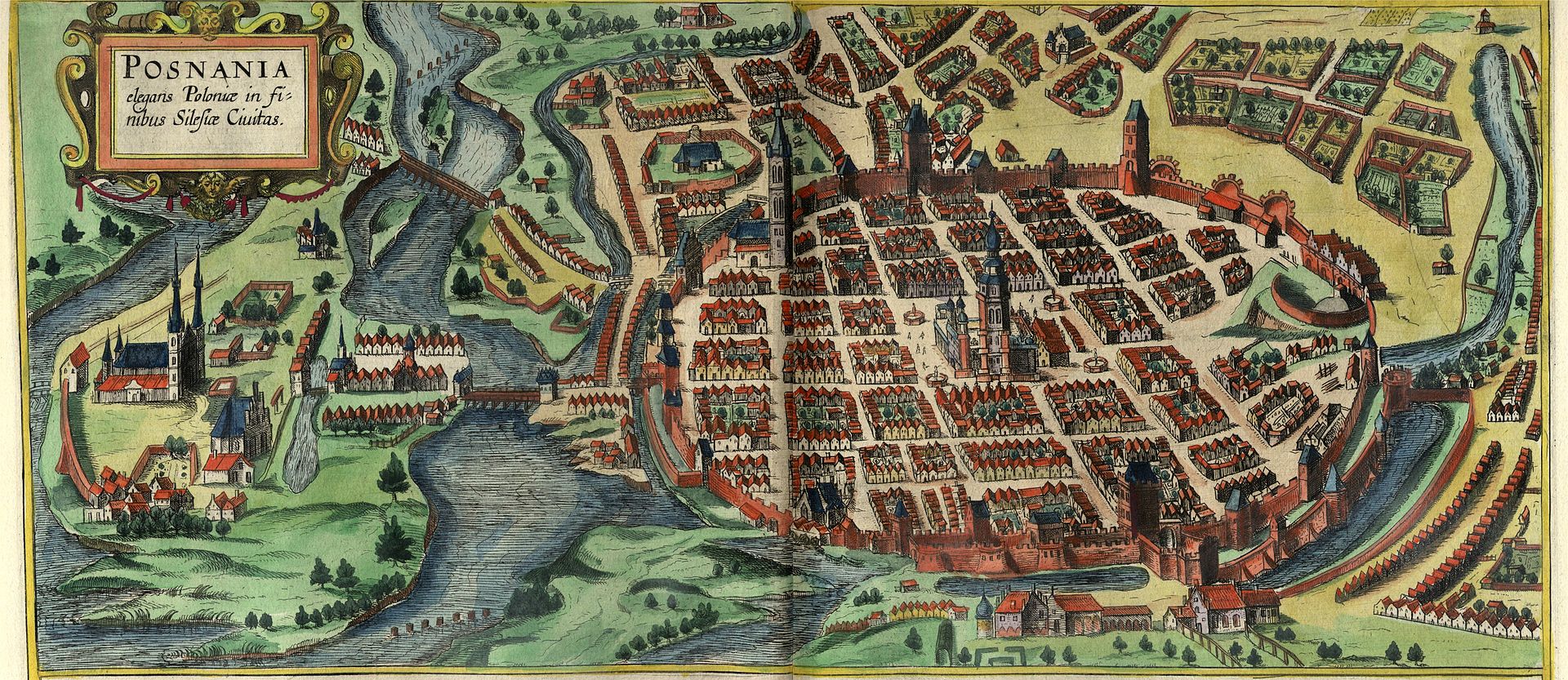Poznań is often perceived as a peaceful and legalistic city, subordinate to the authorities and absent from the history of national uprisings. Looking back to its past, however, proves that it has little to do with compliance. Przemysław Matusik, author of the book “Historia Poznania” (“History of Poznań”) talks about the rebellious nature of the city, but also its significant place in Polish history.
Natalia Pochroń, Polish History Museum: Poznań is acknowledged as the cradle of the Polish state. What role did it play in the process of unifying the Polish lands and building the Piast state?
Przemysław Matusik: The beginnings of Poznań are related to creating the foundations of the Polish state. In the 940s, a huge borough was built where Poznań is today, surrounded by great embankments, surpassing everything that had existed in Poland so far. What’s more, during archaeological research conducted in recent years in Ostrów Tumski, the team of Prof. Hanna Kóčki-Krenz discovered the remains of the brick palace of Mieszko I together with the foundations of the palace chapel, perhaps the first Christian temple in the country of the Polanie tribe. It is certain, however, that the first Polish bishopric was located in Poznań. In addition, the Poznań cathedral was the burial place of the first Piasts, probably also Princess Doubravka of Bohemia which – according to tradition – urged shes husband, Prince Mieszko to be beptised. All this proves the special role of Poznań in the early Piast monarchy, and at the same time raises many questions and disputes about where the center of the Piast state was actually located.
Researchers have long been divided as to which city should be considered the first capital of Poland – Gniezno, with the relics of Saint Adalbert and the congress in 1000, or Poznań, with the first Polish bishopric and cathedral, the big fortress in Ostrów Tumski or the discoveries of Prof. Hanna Kóčki-Krenz, which, according to many, would make it a capital city. Can it be resolved unequivocally today?
In principle, no. It is difficult to talk about a capital city in the Piast times as it is understood today. The key to those times is the concept of “rex ambulans” – the traveling monarch. The ruler was then constantly on the move, the capital was where he was, along with the court. We can, however, talk about centers that played a large role.
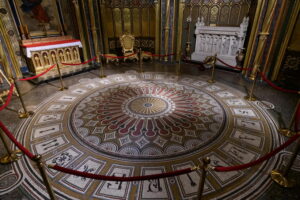
Including Gniezno?
Yes, the high position of Gniezno is unquestionable, as we know in the famous document “Dagome iudex” even the name of the Gniezno state appears. Added to this are the above-mentioned issues – such as the relics of St. Adalbert, or the momentous meeting of Bolesław the Brave with Emperor Otto III. Some researchers point out that the rank of Gniezno grew primarily during the reign of Bolesław the Brave. Perhaps in the times of Mieszko I it was Poznań that played the role of the state center and the headquarters of the first historical ruler of Poland. There must have been a reason to locate the seat of the first bishopric here, as the beginning of the church authorities in the Piast state.
The reign of Przemysł II additionally increases the rank of the city.
That’s true. Between 1030-40, the center of Wielkopolska lost its importance as it was pushed to the background, and the center of the state moved to Krakow. The breakdown of the districts changed this state of affairs, increasing the importance of local centers. It was then that the rivalry between Gniezno and Poznań gained special importance. The role of Przemysł I and his successor – Przemysł II – in the development of Poznań cannot be overestimated. Under their rule, the city became the center of the unification of the Polish state, the culmination of which was the coronation of Przemysł II in 1295. Although he ruled for only a few months, this period had an extremely important political significance, strengthening the position of not only Przemysł but also Poznań compared to other Polish urban centers. The king of Poland resided in this city for several months, hence he exercised his power. It is also worth remembering that Przemysł II was the first ruler to use a crowned eagle in his seal. This sign soon became a symbol of the united Polish state.
In the late Middle Ages, Poznań grew to the size of one of the largest cities of the then Polish-Lithuanian Commonwealth – it was only second to Krakow in its size and population. Was it an equally important city?
The 15th century, and above all the 16th century, was a period of significant prosperity in Poznań. It was a residential city often visited by monarchs. The church also played a significant role. Located just outside the city walls, the Corpus Christi Sanctuary was a very important place on the religious map of Poland at that time. The greatest importance of Poznań, however, resulted from its wealth, and dynamically developing trade, which quickly made the city one of the most important links in the trade chain linking the countries of Western Europe with the East. The proof of this wealth and strength was the expansion of the great parish church in the 14th and 15th centuries, with probably the highest church tower in Poland at that time, and the new town hall in the 16th century in a magnificent Renaissance style. It is a symbol of the greatness of Poznań at that time and its importance in the then Polish-Lithuanian Commonwealth.
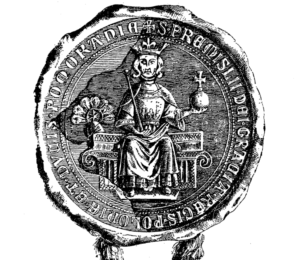
The dynamic development of Poznań was, however, shaken by the Swedish invasion in the mid-17th century.
Yes, and even worse were the great natural disasters in the 18th century, but also the Northern War, and later the Seven Years’ War and the Bar Confederation. These conflicts caused enormous destruction and devastation of the city. While in the 17th century the number of Poznań inhabitants reached approximately 20,000, at the beginning of the 18th century it dropped to only 6,000! During the rule of Stanisław August Poniatowski, the political situation stabilized and the city was rebuilt after the devastation. The development impulse was, however, suppressed by the partitions of Poland. The Prussians entered the Poznań territory with a completely new idea for the development and organization of this city.
The time of partitions is the time of great Prussian investments in Poznań – impressive German buildings were built, and the city was modernized on a large scale. How did the period of Prussian rule affect the fate of Poznań?
The Prussians really contributed to the development of Poznań, at the end of the 18th and at the beginning of the 19th centuries they carried out a number of significant reforms, continuing some tendencies initiated in the Old Polish period. They merged the entire complex urban agglomeration into one organism and dismantled the medieval walls surrounding the city – all this was associated with enormous financial outlays. In the initial period, we can actually talk about the city’s development, which would not have been possible without the inflow of funds from Berlin.
However, in the 1820s, the Prussians decided to make Poznań an element of the defense network on the eastern outskirts of their country, and began the 40-year-long construction of the fortress and the fortifications surrounding the city. It was a fatal move for Poznań. The system of military fortifications closed the city again, which seriously and for many years inhibited its development. It is also worth noting that of all the large cities of former Poland, Poznań was the only one that in the 19th century did not have – even temporarily – its own university. This also significantly influenced the character of its society. The Polish intelligentsia was very weak here, the Prussian authorities did not allow them to enter offices, and they did not have much possibility to act.
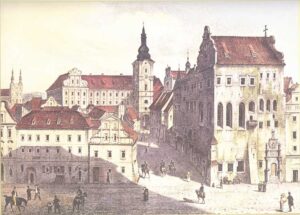
There was not a large group of intelligentsia, but there were many equally outstanding figures – such as Karol Marcinkowski or Hipolit Cegielski – cultivating organic work, and leading many development initiatives. Why was there so much space for their activities?
Indeed, it is a very interesting topic. Within Polish society many important and socially active figures could emerge. One of them was Karol Marcinkowski. His biography is an ideal proof of social advancement in the 19th century – a child of the Poznań suburb, thanks to his skills, ambition and solid work, he was educated and became a doctor. In addition, he was socially involved and took part in the November Uprising. At the end of the 1830s and at the beginning of the 1840s, he became the undisputed leader of the Polish community, not only in Poznań, but also throughout Wielkopolska. It was to his credit that in 1841 the Scientific Aid Society was established – a scholarship institution that helped to educate the next generations of Polish intelligentsia in Poznań.
Another, equally important figure in the history of 19th-century Poznań was Hipolit Cegielski. A junior high school teacher dismissed from work for political reasons, he founded his own industrial plant, which was extremely important for the development of Poznań. There were many more similar people involved in social activities, cultivating the idea of organic work and acting for the development of the city. All initiatives of this type meant that in the second half of the 19th century, Poznań became the center of Polish organizational activity. Of course, it was not without significance that there was much greater freedom under the Prussian rule than in the Russian partition. Prussia was, after all, a state of law, allowing for the development of various social initiatives. The Poles made the most of it, and began to create various organizations covering the entire Prussian partition and the Polish diaspora in the depths of the Reich, the center of which was Poznań. Hence, and in the interwar period, it was considered – quite rightly – as the capital of the Western Territories or the Western Borderlands of the Republic of Poland, as it was then called.
And for the fourth city of the Second Polish Republic – such a term was often used. In the interwar period, Poznań experienced its incredible boom, having in many areas a decisive advantage over other Polish cities. How did it stand out?
First of all, it was a large city, practically not damaged by the war. Thus, it had an excellent infrastructure, which was the result of earlier Prussian investments. In addition, after the Poles took power, the German population began to leave the city en masse and leave their companies or plants. Poles bought these enterprises and gradually developed, which made Poznań relatively quickly an important industrial center. There was also trade. Already in 1921, the first Poznań Fair was organized, which gained international status after less than four years. One of the symbols of Poznań’s resilience was the fact that it was here that the first passenger airline from Poznań to Warsaw was launched, and that a football match was broadcast by radio for the first time in Poland.
Finally – what is very important – a university was opened, which led to the formation of a new intellectual milieu in the city. All of this had a significant impact on the development of Poznań and an increase in its position in the Second Polish Republic. As the second mayor of this city, Cyryl Ratajski, admitted in the interwar period, it had the ambition to become the capital of Polish modernity, thus a number of initiatives were undertaken that gave it a unique position in the country. It is no coincidence that it was in this city in 1929, that the General National Exhibition was organized, showing the achievements of independent Poland. In addition, Poznań has always been characterized by a certain degree of distinctiveness; it embodied certain Western European trends. As Nobel Prize poet Czesław Miłosz, an inhabitant of Vilnius, admitted after many years: “I felt what the West meant for the first time when I was in Poznań”. Warsaw did not make such an impression on him.
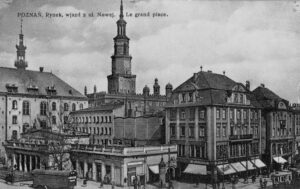
The impressive prosperity of the country was once again halted by external factors – in this case, the aggression of the Third Reich. While the Wielkopolska Uprising is well known today, the truth about the nightmare of the occupation in Poznań did not get through to the awareness of the inhabitants of other Polish regions. What were the living conditions in the Wielkopolska incorporated into the Reich?
When we think about the occupation, we usually equate it with the situation in the General Government. Meanwhile, it looked different here, and different in the Borderlands or the lands incorporated into the Third Reich. Wielkopolska was treated in a special way. The Germans remembered the role it played during the partitions – the center of Polish life – therefore the elimination of Polishness took on particularly drastic forms here. When they incorporated Poznań into the Reich, they assumed that Poles should completely disappear from this city in the long run, and that Germans would take their place. This was in line with the consistently implemented program of building the “Mustergau” here, assuming the transformation of Wielkopolska into a model district of the Third Reich.
The first thing that the Germans did after entering Poznań was to displace its leadership and intelligentsia. The effects of this action were as intended. From November 1939 to the beginning of 1940, about 30,000 persons were deported from Poznań to the General Government. In addition, all Polish property – industrial plants, enterprises, shops and land estates – were confiscated and fell into German hands, cultural goods were destroyed, and Poles were subjected to strict racial segregation and ruthlessly exploited as labor force working for Germany.
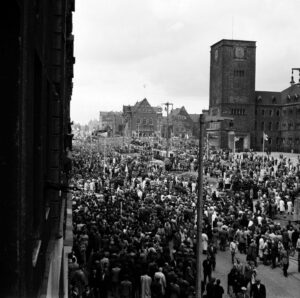
The myth of Poznań as a legalistic city, submitting to all authorities, has survived in history. How does this image relate to the underground activity of Poznań residents during the occupation?
This is obviously a stereotype – harmful and untrue. It is enough to mention here the underground activity during the Second World War. This aspect remains almost completely forgotten today, often even by the inhabitants of Poznań. Meanwhile, in the first days of the occupation, various underground formations began to spontaneously form. One of the most significant was, for example, the Organization of the Western Territories “Ojczyzna” (“Homeland”), which maintained contact with the Polish government-in-exile. Next to it, a very strong network of the National Military Organization was created, with time also Home Army, and the scout underground was very active. In extremely difficult conditions, however, all of them were broken, and their members paid the highest price for their patriotism.
The Poznań spirit of struggle for independence was deeply rooted in the memory of participation in the 19th-century uprisings, and above all in the tradition of the Wielkopolska Uprising. After all, Poznań residents took part in both great uprisings – in November and January, and in 1848 in the fights of the Spring of Nations in Wielkopolska. The greatest significance, however, was the Wielkopolska Uprising – the victorious act of overthrowing the Prussian authorities and the efficient establishment of Polish orders. On the other hand, it is worth noting that in the interwar period, Poznań became known as a rather adventurous city, consumed by, for example, violent disputes between the National Democrats and the supporters of the Sanation. In 1926, the regiments from Poznań set off to rescue Warsaw, fight along with Piłsudski, and students enrolled en masse in the volunteer units that were to help them. Poznań was truly agitated by the May Coup, and people often thought about marching to the capital until the end of the Second Polish Republic.
The fact that Poznań is not a submissive city was proved most strongly in June 1956 – the first social revolt against the communistic role. To suppress this spontaneous workers’ insurgency, the communists used more tanks than were used to capture the city in 1945. The dramatic events of 28 June 1956, often called the uprising, were a protest against communist exploitation, and the trampling of human dignity. Although the inhabitants of Poznań initially presented social slogans, their longing for a free, truly independent Poland was quickly revealed in their activities. It is a significant proof of the defiance of the Poznań spirit, which respects the law and rules, but at the same time does not submit to foreign authorities and, when necessary, can boldly stand up for freedom and independence.

Which period or event in the history of Poznań has most influenced its present image?
When it comes to the awareness of the inhabitants of Poznań, I think that three things should be mentioned here. The first is the significant role of Poznań in the beginnings of the Polish state. Although for many years it was not really remembered, today it takes on special importance, and it shapes the identity of Poznań residents more and more as residents of the city where Polish statehood was also born. Another, perhaps even more important event, is the victorious Wielkopolska Uprising, which was a huge contribution to the reconstruction of the Polish state after the partitions, and an object of great pride for the inhabitants of Poznań and all inhabitants of Wielkopolska. And finally, a special place in Poznań’s identity is occupied by June ’56 – the great revolt of the workers against the Communist government, which was against it, but also against the very essence of the Soviet ideology. It was an event not so much nationwide as it was worldwide. Taking to the streets, the inhabitants of Poznań exposed the falsehood and hypocrisy of the Communist system and once again confirmed the special role of Poznań – an important center of Polishness that cannot be suppressed.
Interviewer: Natalia Pochroń
Translation: Alicja Rose & Jessica Sirotin

